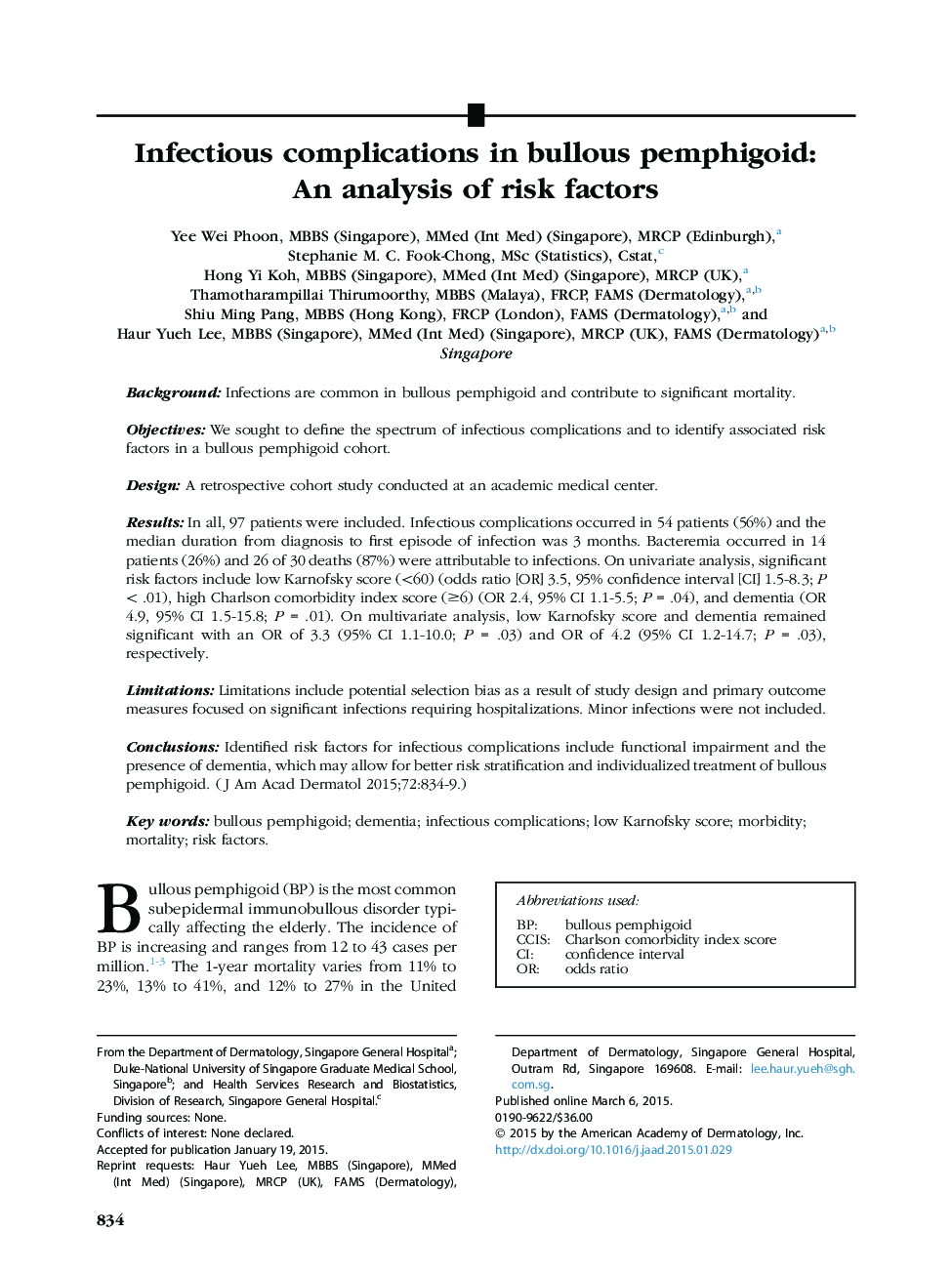| Article ID | Journal | Published Year | Pages | File Type |
|---|---|---|---|---|
| 3205083 | Journal of the American Academy of Dermatology | 2015 | 6 Pages |
BackgroundInfections are common in bullous pemphigoid and contribute to significant mortality.ObjectivesWe sought to define the spectrum of infectious complications and to identify associated risk factors in a bullous pemphigoid cohort.DesignA retrospective cohort study conducted at an academic medical center.ResultsIn all, 97 patients were included. Infectious complications occurred in 54 patients (56%) and the median duration from diagnosis to first episode of infection was 3 months. Bacteremia occurred in 14 patients (26%) and 26 of 30 deaths (87%) were attributable to infections. On univariate analysis, significant risk factors include low Karnofsky score (<60) (odds ratio [OR] 3.5, 95% confidence interval [CI] 1.5-8.3; P < .01), high Charlson comorbidity index score (≥6) (OR 2.4, 95% CI 1.1-5.5; P = .04), and dementia (OR 4.9, 95% CI 1.5-15.8; P = .01). On multivariate analysis, low Karnofsky score and dementia remained significant with an OR of 3.3 (95% CI 1.1-10.0; P = .03) and OR of 4.2 (95% CI 1.2-14.7; P = .03), respectively.LimitationsLimitations include potential selection bias as a result of study design and primary outcome measures focused on significant infections requiring hospitalizations. Minor infections were not included.ConclusionsIdentified risk factors for infectious complications include functional impairment and the presence of dementia, which may allow for better risk stratification and individualized treatment of bullous pemphigoid.
